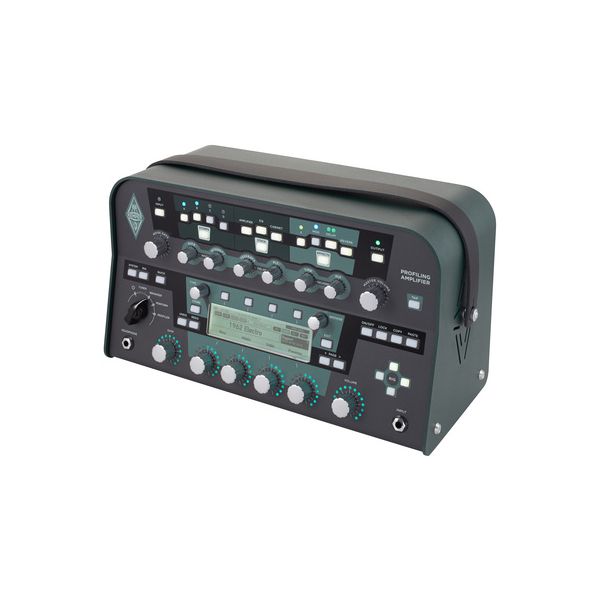Die Kiste ist vermutlich das, worauf alle, die vor 15 Jahren mit dem Pod angefangen haben, gewartet haben: Die zweite Revolution abseits der Röhrenpfade. Alle technischen Details können auf der Seite nachgelesen werden. Ich will nur meinen persönlichen Eindruck schildern.
Verarbeitung: die Kiste ist noch kleiner, als ich sie mir vorgestellt habe und während sie ja auf Bildern wie ein eigenartiges, vielleicht sogar etwas billiges Gerät aus der Medizinbranche herüberkommt, so ist sie "live" richtig schwer und wertig. Alles feinste Qualität.
Der Sound:
Nun, da ich lange als Toningenieur und als Berufsmusiker gearbeitet habe, war ich sehr gespannt was denn nun dieses Ding kann. Ich habe Dutzende Amps besessen, Pods, Guitar Rigs und weiss der Geier nicht was alles. Und aus Erfahrung weiss ich, dass die Gitarrenabnahme im Studio oft sehr ernüchternd war, da man den Amp durch das Close-miking viel zu dünn, schroff und harsch empfand.
Nur so viel: Von Clean bis Crunch ist das hier das mit Abstand beste, was ich je gehört habe. Ich kenne viele von den Amps, die hier geprofiled wurden und ich muss sagen,es fühlt sich so an als würden sie im Zimmer stehen.
Die Effekte sind gut, klar, es sind eben nicht so viele wie bei vergleichbaren Geräten, aber die Qualität stimmt. Einzig die Distortion Sounds haben mich nun noch nicht alle umgehauen, wobei man sagen muss, dass ein Amp ja oft eben zu honky und mumpfig oder eben zu harsch klingt, wenn man ihn miked und das ist ja nun mal die Art einen Amp mit dem Kemper nachzubilden. Um das zu umgehen mischen ja die Pros verschiedene Sounds zu ihrem Distortion-Sound zusammen, wie z.B Vox Ac30 und Marshalls, oder Diezels und Mesas. Diese Multiampingfeature fehlt noch, aber es wird sicher noch folgen. (so lange muss man eben nacheinander die amps nehmen und doppeln)
Und das unglaublichste ist ja, dass man sich per mail die "amps" schicken kann und dann wirklich authentische Profiles aller erdenklichen Amps in dieser kleinen Kiste mit sich herumträgt. Kemper wird sicherlich auf Jahre den Modelling-Markt beherrschen.
Am Ende des Tages geht es doch nur um eins, vöilig unabhängig von Röhre, Digital, Holz oder Plastik: Inspiriert mich das Instrument, der Amp,oder nicht? Und das hier macht einen Riesenbock !!! Einzige Gefahr: Durch die unzähligen Kombinationsmöglichkeiten kann man sich leicht verzetteln und gar nicht zum Aufnahmeknopf kommen !!! Also, nicht zu viel drehen, sondern einfach loslegen....
Nachtrag: Habe mein Midi-Board drangeklemmt mir zwei drei Bänke mit meinen Lieblings-Rigs belegt und jede Menge Gigs gespielt. Läuft erste Sahne. Sogar mit Akustik-Klassikgitarren (Einfach die Amp-Simu raus, Effekte drin lassen, EQ einstellen und ab gehts) klingts wunderbar. Also absolut Live-tauglich, nicht nur ne Studio-Kiste. Nach fast einem Jahr immer noch happy.





)
)
)
)
)
)

)


